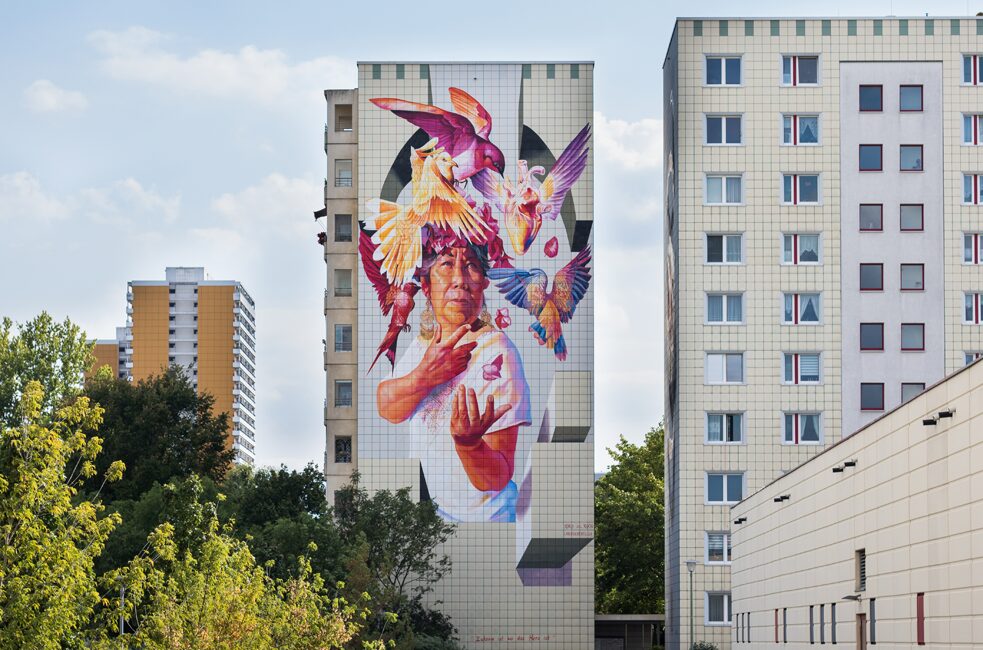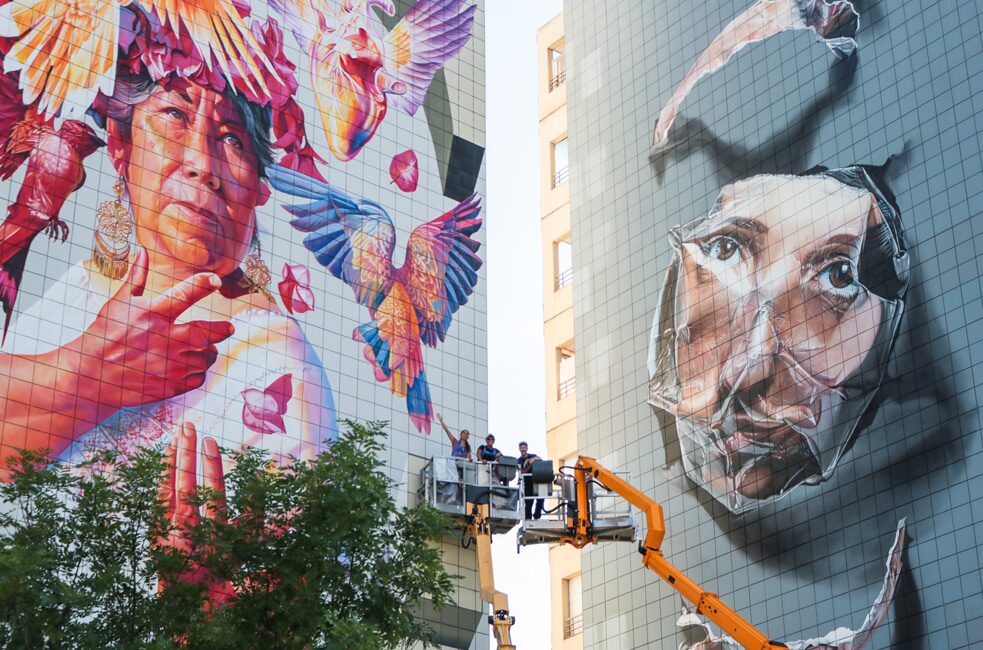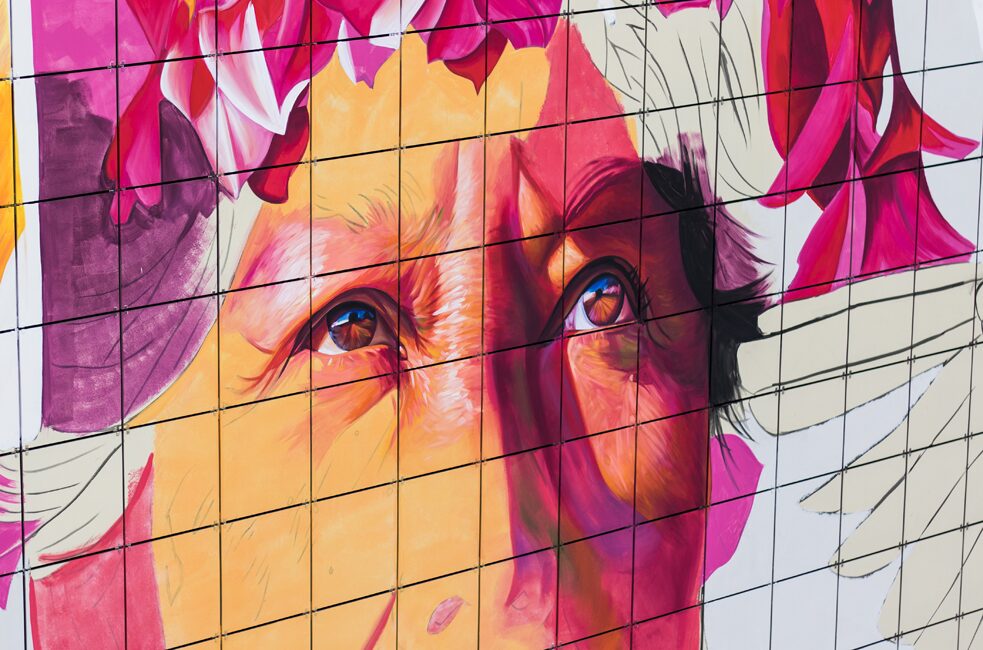This bittersweet ideal
Migration is one of the most important topics in Mexico. Beyond its immediate political connotations, its relevance is evident in the fact that thousands of people within Mexico have moved from the place of their birth to the big cities looking for better job opportunities,
while others have even gone as far as crossing the border to the US without papers in search of the American dream – this bittersweet ideal that promises satisfaction but tears families apart.
By way of expressing this sentiment and showing sympathy with all those Germans who have left their home country and with those who have adopted Germany as their new home, Adry created the mural El hogar está donde está el corazón (home is where the heart is). Painted in shades of orange, magenta, and violet, the mural features a woman, perhaps a mother who is far away from her children who have left in search of a better future.
I love doing magical realism and blending it with a little surrealism
Adry del Rocío
“This is a work that was created with great love for all those who have had to move away from their homeland, their country, or their city”, she says.
Instagram feed
Adriana del Rocío García Hernández
It is a matter of pride for Mexicans that one of the foremost exponents of hyper-realistic and 3D street art is Mexican. Adriana del Rocío García Hernández began her career as an artist at the age of four, when she won an art competition. Thanks to this early encouragement, she already graduated with a degree in Visual Arts at the age of 16, which paved the way for her to show her work in more than 90 collective and 54 individual exhibitions in Mexico, the USA and Spain. “I have been painting for as long as I can remember, and have been exhibiting in various formats and techniques since the age of eleven”, she explains.
Her interest in using prints to replicate real life prompted her to devote her art to hyper-realistic murals in which she depicts Mexican elements such as corn, Mexican fauna, and the skulls of the Día de Muertos. On the Paseo de la Reforma in Mexico City she created a beautiful mural with a tree of life and numerous national elements that is dedicated to death.
But her work went even further. Adry began to play with dimensions and to experiment with 3D, creating works that from certain angles are transformed into huge murals, giving the sense of a third dimension and inviting us to explore surreal landscapes with gigantic fish and figures from other universes.
Given that muralism was born in Mexico, it would be illogical if she had no connection to the great masters: “the work of Alfaro Siqueiros and Orozco always makes me shudder”, she comments.



